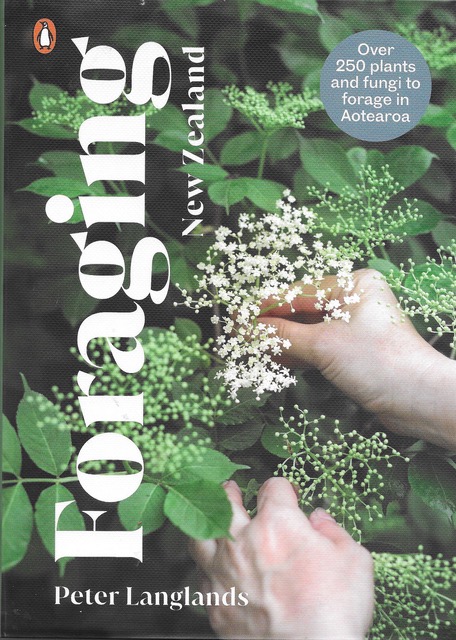Book Review: “Foraging New Zealand” by Peter Langland’s. Published by Penguin, price $50.00

Reviewed by Tony Orman
“Foraging New Zealand” by Canterbury’s Peter Langlands is a meticulously researched guide to foraging, i.e. gathering leaves and flowers for eating.
Author Peter Langland’s says with introduced species added to native plants, there’s over 7,500 edible species to consider but for practical reasons he’s chosen 250 main species, “selected for their flavour, generally recognised as safe to eat and for being readily available.”
This is an invaluable book for outdoor recreation enthusiasts. Most of use know of field mushrooms and the likes of blackberries but as the author relates, there’s so much unsuspected food sources out there in the mountains, river banks, roadsides and other outdoors environments. Enhance your campsite meals with treats for garnishing salads or cooked vegetables. Did you know the bright yellow flowers of gorse can be used to add colour to a salad? They add taste with an “aromatic coconut flavour” writes author Peter Langlands. Similarly fresh red clover flowers can be added to salads and “the dried flowers make good herbal teas” while the “fresh spring growth can be eaten raw in salad, the older foliage steamed and eaten as a vegetable.”
I remember a place I hunted years ago in the Southern Ruahine Ranges where kawakawa grew in profusion. Well Peter Langland’s relates that researchers have confirmed that kawakawa contains over 60 biologically active compounds. “The leaves have a refreshing peppery and slightly numbing sensation on the palate. They can be eaten raw but have a strong flavour so are best steamed or pickled or used in tea.”
In another Ruahine Range hunting nook I knew well, there were horpito shrubs. This indigenous pepper is ideal to flavour to flavour savoury (e.g campfire venison stew) and sweet dishes. “The wood and dried leaves can be used to smoke different foods and when mixed with manuka, make a dynamic smoke flavour.”
Or how about manuka? The wood has a high burning point and produces an aromatic smoke that can be used to cold and hot smoke a wide variety of foods. A refreshing herbal tea can be made from sprigs of fresh green growth and the flowers, through simply steeping the branches in hot water, will also create a refreshing drink.”
Other native plants feature such as pohutukawa, lemonwood, rimu, kahikatea, totara, miro and others.
Safety is paramount in foraging from the wild and the book stresses the need for caution and readers are urged to “be vigilant about potential toxins, environmental contaminants and proper food preparation techniques to minimise risks.”
With a lifelong interest in the outdoors enhanced by a Canterbury University natural sciences degree, Peter Langland’s with Bateman Books stylish book design have produced an intriguing handsome volume. Terrifically well indexed, “Foraging New Zealand” contains a wealth of valuable information about the individual plants too of distribution, character, environments etc., – both native and introduced.

